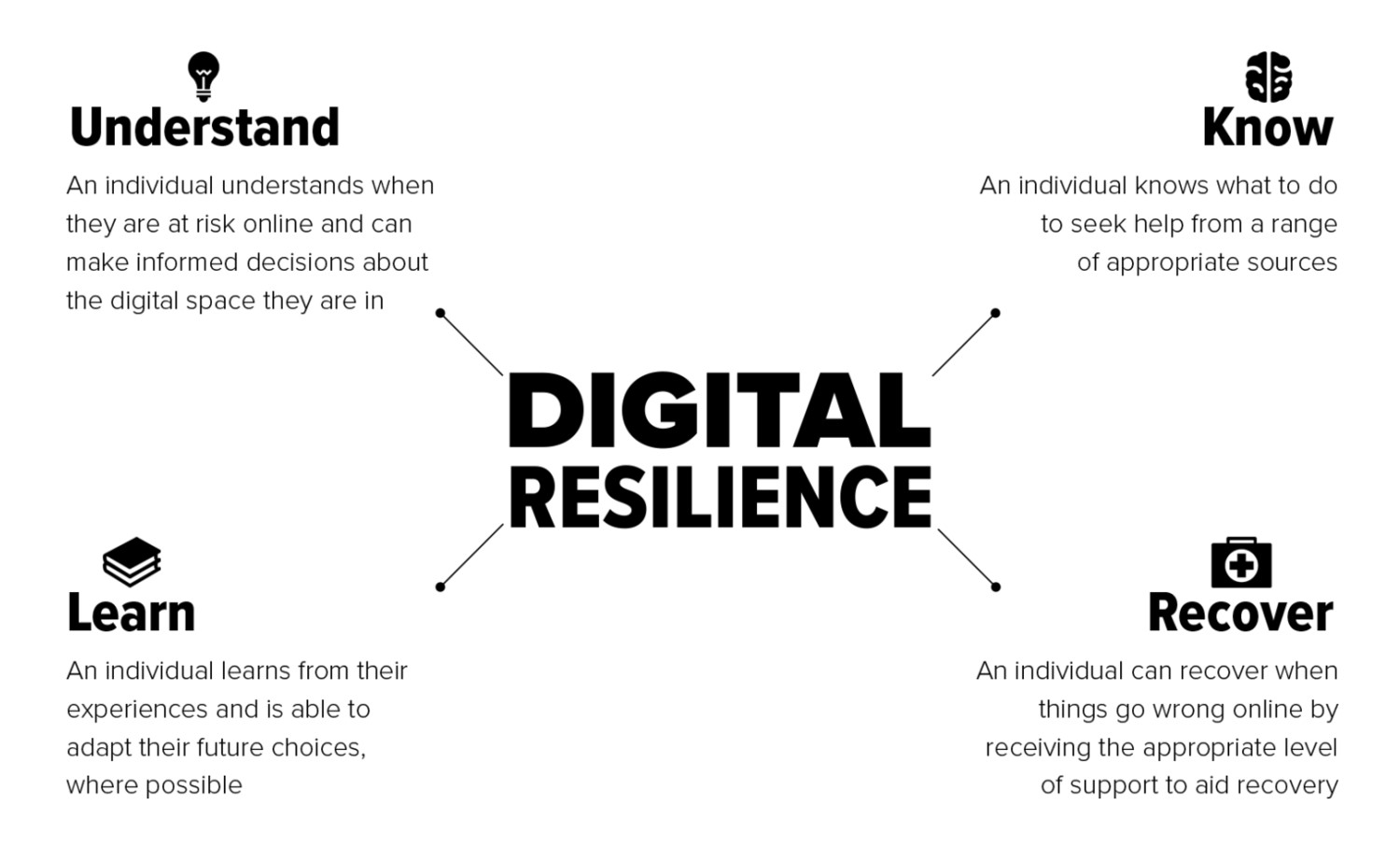Building Digital Resilience: Equipping Students to Thrive in a Tech-Driven World
@jorgebscomm for @empowervmedia*
The digital landscape is constantly evolving, shaping not only our adult lives but also the lives of children and adolescents. While technology offers immense opportunities for learning, connection, and creativity, it also presents unique challenges. In this rapidly changing environment, building digital resilience becomes crucial for students to navigate the online world safely, responsibly, and productively.
 |
| Building digital resilience is crucial in an ever-evolving technological landscape 📷 oercommons |
Understanding the Need for Digital Resilience
The rise of the digital age has blurred the lines between the online and offline worlds, creating a unique set of challenges for young people. They are exposed to information and content at an unprecedented rate, often lacking the necessary skills to discern its accuracy, source, and potential bias. Additionally, social media platforms can create unrealistic beauty standards, fuel social comparison, and foster cyberbullying – impacting students' mental health and self-esteem.
Defining Digital Resilience
Digital resilience refers to the ability to adapt, thrive, and bounce back from the challenges and risks associated with technology use. It encompasses various key components:
• Critical thinking skills: The ability to evaluate information online for accuracy, bias, and trustworthiness is essential for students to navigate the vast ocean of online content. This involves questioning the source, identifying potential biases, and verifying information through credible sources.
• Cybersecurity awareness: Understanding potential online threats like cyberbullying, online predators, phishing scams, and malware empowers students to protect themselves. This includes learning about safe online behaviour, password management, and identifying suspicious activities or content.
• Digital citizenship: Responsible online behaviour, including respecting others online, using technology ethically, and maintaining a positive digital footprint, is crucial for students to become responsible digital citizens. This translates to respecting online privacy, practicing empathy and kindness in online interactions, and avoiding plagiarism or copyright infringement.
• Healthy technology use: Developing healthy habits for screen time management, preventing technology addiction, and striking a balance with offline activities contributes to overall well-being. This includes establishing screen time limits, engaging in physical activities, prioritizing sleep, and fostering hobbies and social interactions outside the digital world.
 |
| 📷 LSE |
Equipping Students for Success: Evidence-Based Strategies
As educators and parents, we play a vital role in fostering digital resilience in our students. Here are some evidence-based strategies to consider:
• Open communication: Foster open and honest communication regarding online experiences, both positive and negative. Encourage students to share their concerns and questions without fear of judgment, creating a safe space for dialogue and problem-solving.
• Digital literacy education: Integrate digital literacy lessons into the curriculum, teaching students critical thinking, online safety practices, and responsible online behaviour. This can involve courses or workshops dedicated to digital literacy, or integrating these skills into various subject areas.
• Positive online role models: Highlight positive online role models who use technology responsibly and ethically, inspiring students to emulate them. This can include creators, educators, activists, or even public figures who use online platforms for positive impact.
• Modelling healthy technology use: Be mindful of your own technology habits and model responsible use in front of students, demonstrating the importance of striking a balance with offline activities. This includes setting boundaries for your own technology use, engaging in shared unplugged activities, and communicating the value of offline experiences.
• Promote offline activities: Encourage students to engage in hobbies, social interactions, and physical activities outside the digital world, fostering well-being and a sense of balance. This could involve encouraging participation in sports, clubs, artistic pursuits, or simply spending time in nature.
Building a Support Network
Building digital resilience requires a collaborative effort. Educators, parents, and the community play crucial roles in creating a safe and supportive environment for students to explore the digital world. Open communication, collaboration, and access to resources like digital literacy workshops can empower students to navigate the online world with confidence and become responsible digital citizens.
The Importance of Fostering a Growth Mindset
Encouraging a growth mindset towards technology can further empower students. A growth mindset emphasizes learning from mistakes and challenges, fostering resilience and adaptability in the face of difficulties. By fostering a growth mindset, we encourage students to approach online challenges as opportunities to learn and grow, ultimately contributing to their digital resilience.
 |
| Fostering a growth mindset can further empower students 📷 skipprichard |
By fostering digital resilience in our students, we equip them with the skills and knowledge to navigate the exciting yet complex digital world successfully. We empower them to become responsible digital citizens, critical thinkers, and lifelong learners who can adapt and thrive in this ever-evolving tech-driven landscape. Through collaborative efforts, open communication, and evidence-based strategies, we can build a future where technology becomes a tool for growth, connection, and positive impact for all.

.jpg)
